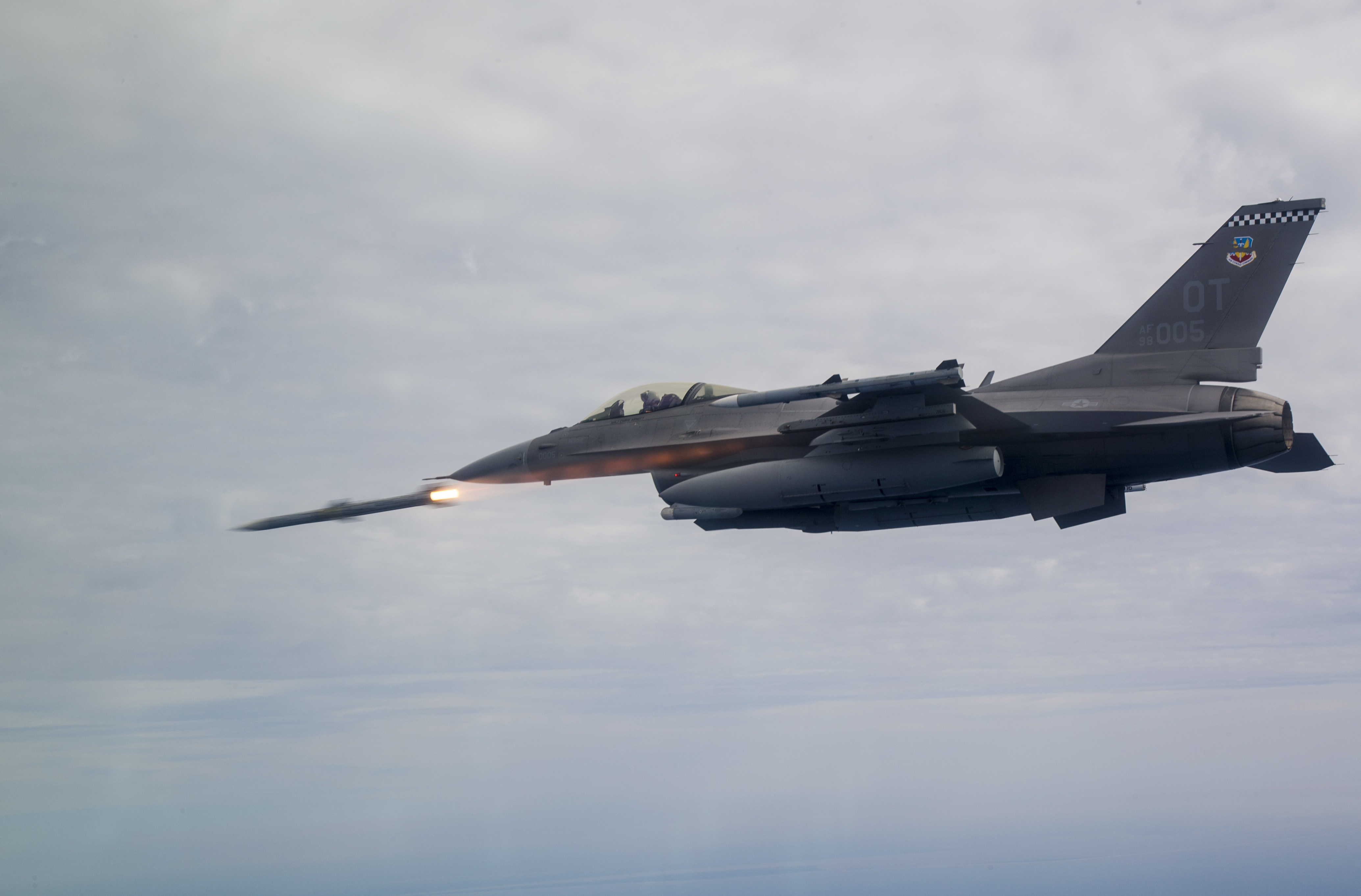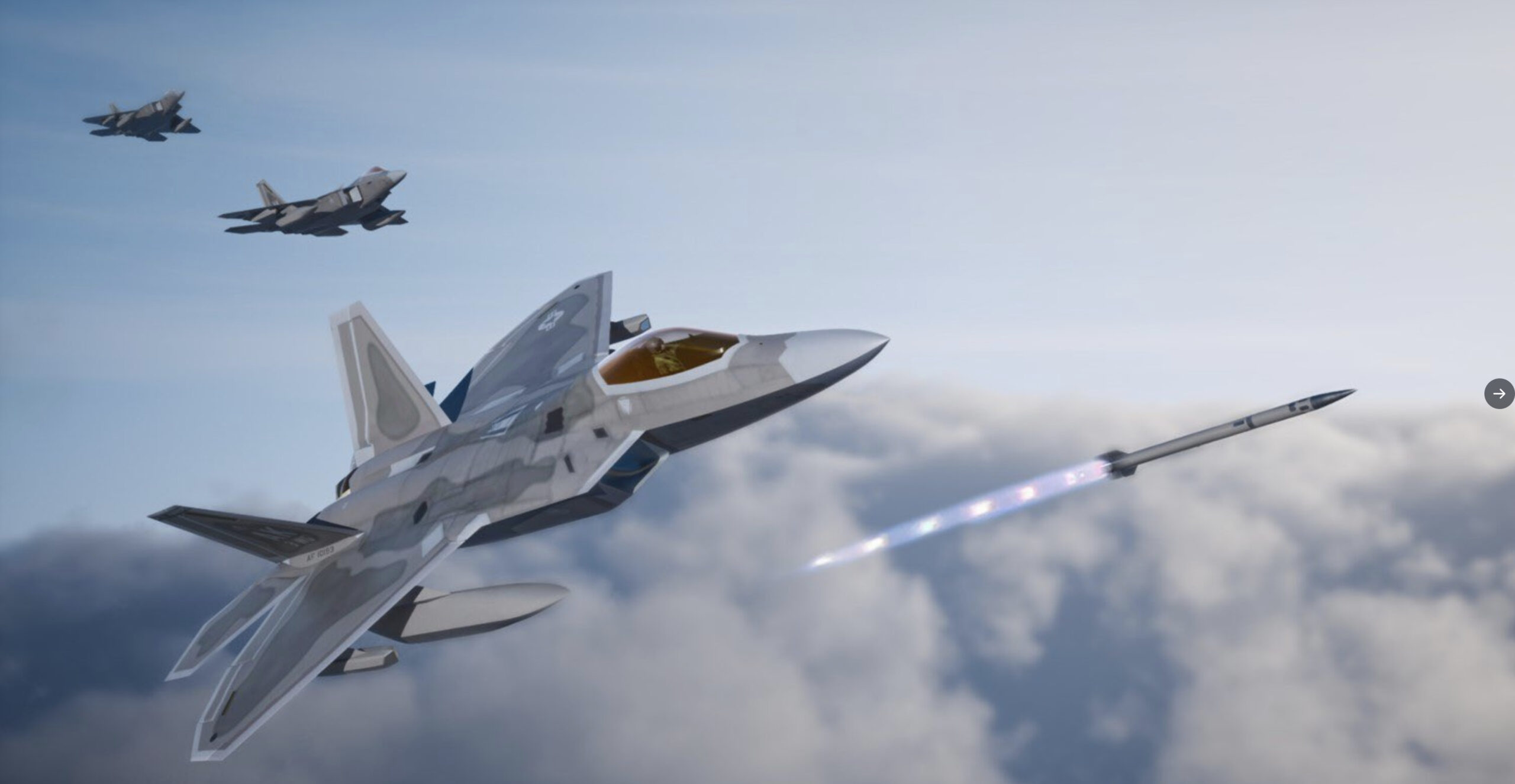Raytheon, a major US defense contractor, has announced significant advancements in the range and capabilities to its AIM-120 Advanced Medium Range Air-to-Air Missile (AMRAAM), positioning it closer to the performance benchmarks set for the secretive next-generation AIM-260 Joint Advanced Tactical Missile (JATM).
These developments suggest the potential for a complementary “high/low” mix of the two missiles in future US air combat scenarios.
John Norman, Raytheon’s vice president for air and space systems requirements and capabilities, provided these details on September 10 during a call with journalists.
According to Air and Space Forces Magazine, he was discussing how RTX, Raytheon’s parent company, plans to maintain the F-22’s credibility—a topic particularly relevant given the current doubts and uncertainties surrounding the Next-Generation Air Dominance program.
Norman highlighted the remarkable evolution of the AMRAAM over its 30-year lifespan, noting that its range now exceeded that of many competing threat missiles.
He also disclosed that the AIM-120 would play a “complementary” role alongside Lockheed Martin’s AIM-260 JATM, a next-generation missile designed to tackle more advanced threats.
“The range that we can get with AMRAAM is approaching that threshold capability that the Air Force would like to have with JATM when it’s fielded operationally,” Norman said.
Though specific range capabilities were not disclosed, industry sources suggest the AIM-120D3 variant is approaching a range of 100 miles (160 km). Meanwhile, the AIM-260 JATM is expected to reach over 120 miles (190 km), giving US forces a critical advantage in long-range engagements.
How AMRAAM Will Complement the JATM?
The AIM-260 JATM, being developed by Lockheed Martin for the US Air Force and Navy, remains shrouded in secrecy, but Norman stressed its “exquisite capability” in countering advanced electronic countermeasures and other emerging threats.
“It addresses all the countermeasures that the threats will employ against us,” Norman noted, further stating that JATM would be a “kick-the-door-down, very expensive weapon.”
On the other hand, “AMRAAM has shown phenomenal performance in testing,” Norman said, adding that its capacity and affordability would ensure its place in the US arsenal in the foreseeable future.
According to Norman, AMRAAM will serve as the more cost-effective “capacity weapon” for widespread use, while JATM will function as a premium, specialized solution for high-end threats. This high-low mix could provide US forces with a flexible toolkit for air superiority across different combat situations.

Beyond its role in air-to-air combat, the AIM-120 has also demonstrated versatility by being integrated into ground-based platforms.
The missile can be fired from the NASAMS (National Advanced Surface-to-Air Missile System), making it adaptable as both an air-to-air and surface-to-air weapon, a feature that extends its value to military forces around the world.
One of Raytheon’s current challenges is ensuring combat pilots are fully versed in the AIM-120’s enhanced capabilities.
Norman pointed out that considerable effort is spent educating fighter pilots at the Air Force Weapons School and through testing and evaluation squadrons, such as the 85th and 422 Test and Evaluation Squadrons.
The Highly Secretive AIM-260 JATM Will Counter Chinese Fighters
The AIM-260, known as the Joint Advanced Tactical Missile (JATM), is an emerging player in the realm of advanced air-to-air munitions, but specific details about its capabilities and deployment timeline remain tightly guarded.
US officials have previously admitted that the development of the AIM-260 has been significantly influenced by advancements in Chinese air-to-air missile technology.
In particular, the Chinese PL-15 missile, which boasts an estimated range of 200–300 km (120–190 miles), has been a major driver behind the initiative.
Armed with PL-15 missiles, China’s stealthy J-20 fighter can effectively engage high-value targets such as tankers and airborne warning and control aircraft—assets critical for US fighters and bombers to conduct long-range missions.
As a result, the impressive range and capabilities of the PL-15 prompted concerns within the Pentagon, serving as a major catalyst for accelerating the AIM-260 program.
The AIM-260 is anticipated to be a significant upgrade over the AIM-120. It is designed to compete with Chinese and Russian developments in long-range air-to-air missile technology.
The Air Force first revealed the existence of the JATM program in 2019, although the missile’s development dates back to at least 2017. The Air Force initially projected that flight testing for the AIM-260 would be completed by 2021, with operational testing scheduled to start in 2022.
It was later reported that live fire testing would commence in the summer of 2023, with production expected to start by the end of the year. However, the current timeline for its progress is not known.
The missile remains in development, shrouded in secrecy under a Special Access Program (SAP). The sensitivity surrounding the missile’s development was underscored by the Air Force’s request for approximately $6.5 million in Fiscal Year 2020 to establish a secure storage facility at Hill Air Force Base in Utah.

While details on the AIM-260’s propulsion system are yet to be officially disclosed, speculation points towards advanced options such as ramjets or dual-pulse rocket motors. These propulsion technologies could potentially enhance the missile’s range and performance.
The AIM-260 is also anticipated to feature a sophisticated multi-mode seeker system, which may include both active radar and imaging infrared capabilities. This dual-seeker arrangement would significantly improve the missile’s accuracy and its ability to withstand electronic warfare countermeasures.
China-Taiwan War: U.S. Readies ‘DEVGRU’ Troops To Thwart PLA’s Potential Invasion Of Taiwan – Media
The integration of such technologies is particularly advantageous for engaging low-observable (stealthy) targets where radar signatures are minimal.
Given its expected extended range, it is highly probable that the AIM-260 will incorporate a two-way datalink similar to the AIM-120D-3. This feature would allow for mid-course targeting updates or re-targeting, further enhancing the missile’s effectiveness.
The AIM-260 is anticipated to share a similar design with later-generation variants of the AIM-120 missile. This design choice is crucial for ensuring compatibility with the internal weapon bays of stealth aircraft like the F-22 Raptor. Stealth fighters generally require internally carried munitions to maintain their low-observable characteristics.
The AIM-260 will be first deployed on the F-22 Raptor, equipping its primary weapons bay, as well as the Navy’s F/A-18E/F Super Hornets.
Plans include integrating the missile with the F-35 Joint Strike Fighter. However, it is reported that the AIM-260 will not be retrofitted to older aircraft models such as the F-15 Eagle and F-16 Fighting Falcon.
- Contact the author at ashishmichel(at)gmail.com
- Follow EurAsian Times on Google News




